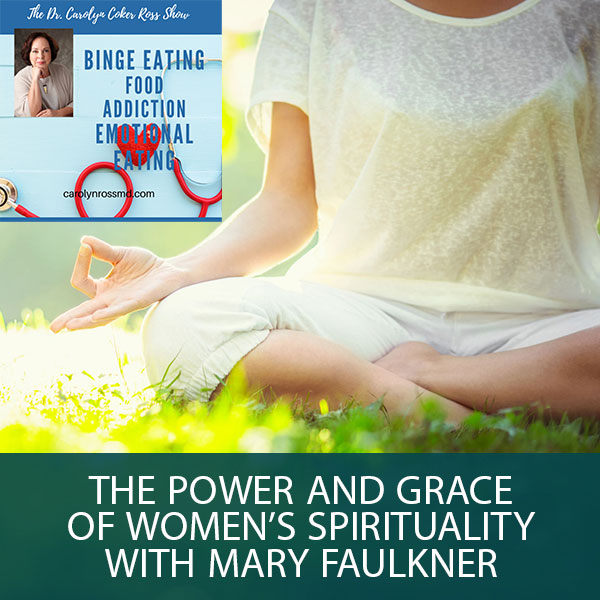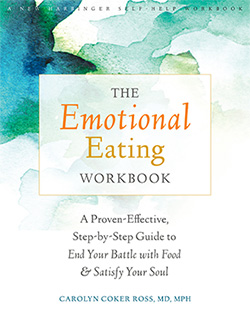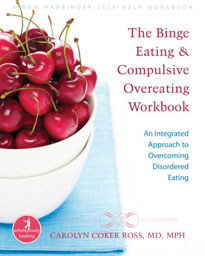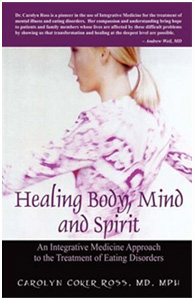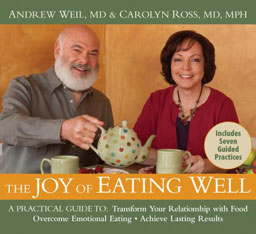
—
Listen to the podcast here:
The Power And Grace Of Women’s Spirituality with Mary Faulkner

The Complete Idiot’s Guide to Understanding Catholicism
It’s a great day to talk about our topic, which is women’s spirituality. My special guest is Mary Faulkner. Mary, who is a friend and a guest, has published seven books including The Complete Idiot’s Guide to Understanding Catholicism. She’s working on a book with the title, Practicing the Seven Sacraments. She is also in the process of laying out the plot for a novel, which will be here first. Her book being featured on the Today Show is Women’s Spirituality: Power and Grace, which was released in August 2018. Mary is a pioneer in the field of mind-body healing as both a therapist and a teacher. She uses clinical hypnotherapy, seeing it as the language for mind-body communication. She also offers certification in the use of clinical hypnotherapy in healing trauma at the Integrative Life Center, an outpatient treatment program for addiction, disordered eating and mood disorders in Nashville, Tennessee. Welcome to the program, Mary. It’s such a pleasure to have you.
Thank you, Carolyn.
I love your book, Women’s Spirituality. It’s quite an amazing book. I want to start out by asking you about the title. You specifically call it women’s spirituality. How is that different from men’s spirituality?
I’m pitching it to women because it helps validate and explain the way that we are in the world that is often not the subject of spirituality. When I describe it, many men believe the same things or are involved in the same activities. I’m talking specifically about women. One of the ways that women’s spirituality is different than men’s is that it deals with life here on Earth. It isn’t otherworldly. It doesn’t have as much to do with getting to heaven or pleasing God. Men’s spirituality or what we generally understand as spirituality, it’s about feeding people, getting babies raised and educated, and a safe living environment. It’s got much of a green cast to it. It involves making life better for people here on Earth. Women see that as a spiritual imperative, not a political imperative. It’s morally right to do that.
In your book, you go through a lot of spiritual traditions all the way back from the goddess archetypes, rituals and ceremonies. You also move forward into more traditional religious organizations like Judaism, Christianity and so on. Why did you include such a full spectrum of spirituality when you wrote this book?
At the time, I wish I hadn’t.
It’s quite an undertaking. It’s such a thorough review of everything that has anything to do with women’s spirituality.
It’s almost a history of women in a way. I wanted to make sure that it wasn’t denominational or pertaining to one segment of the culture, one belief system. I wanted to make sure that it was dealing with women, not a kind of spirituality. In order to make that point, I wanted to give airtime to the major arenas that we think of as religious or spiritual arenas.
Do you think women are more open to these other areas than men?
Absolutely, that was one thing that did become clear is that women cross denominational lines easily. We talk with people from different religions and churches and don’t have the same attachment to it being a certain way.
Do you think that the whole discussion about goddess has been pretty important coming up to 2012 with some of the changes that we’re expecting to happen? Why did you think the goddess is an important symbol for women?
In Nashville, Tennessee at the Parthenon, we have an almost 42-foot tall statue of Athena. I invite everyone who is in your audience to please come to Nashville and see this. The goddess symbolically represents facets of women that aren’t always recognized in the culture that we grew up. Most of us grew up with the archetypes of the mother, maybe teacher and nurse. A narrow field that women needed to fit into to be recognized. There’s a goddess of the wild, an adventuring goddess, a healing goddess, a mother goddess, even a sex goddess, Aphrodite. There’s the whole panoply of archetypes that women can then find themselves.
When you talk about the goddesses’ archetype, the archetype is a role that we can play in our lives, correct?
[bctt tweet=”Sometimes women get truncated into particular roles that they can’t grow out of them.” username=”CarolynCRossMD”]Yes, and women have certain areas that they’re more drawn to. Without any role modeling, it’s difficult sometimes to imagine yourself in those positions. You, as a woman doctor, must have encountered that to some degree.
The difficulty of being somebody outside of who I was expected to be? Definitely. I would probably have a wild woman inside of me that hasn’t been expressed yet. I imagine though that a lot of people in our audience talk about goddesses. If they’re from a traditional religious background, they don’t understand why this is such a useful way of thinking about things. Can you say a little bit more about how maybe you’ve used it in your work or in your personal life?
They are role models is what we’re talking about and personality types. It’s not necessarily divine in the way that we think in the Judeo-Christian traditions of God. God is an archetype too for that matter.
Let’s not go there yet.
Rather than spiritual terms, think of it psychologically that it helps women develop more aspects of themselves. More talents they have that might not get developed if they were encouraged by the fact that a goddess has already done this for them so that they have some role modeling to follow. It helps break them out of cultural boundaries.
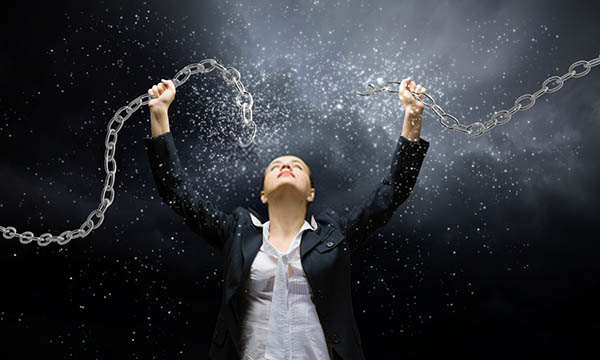
Women’s Spirituality: It’s important for women who are caught in the underworld to realize that they have been given the skills and ability to get out.
In your book, you wrote about some important archetypes or role models/goddesses and then you relate them to modern day women. You mentioned Artemis and Athena. Do you remember any of the examples that you gave on that? I thought that brought it home for me in terms of understanding those parts of us.
I remember the Artemis archetype.
You have Artemis. Artemis is the Girls Gone Wild one. It’s our pure wild nature.
It’s our pure wild nature but it’s also the woman that went out and observed the gorillas?
That’s Jane Goodall.
She would be an example of that. She went off by herself and studied the chimpanzees and their family life.
She doesn’t sound wild.
It wasn’t wild but she was in the wild. She was observing nature. She was not in an office doing something. She was out encountering it in the wild. She’s attributed with saving the species. She made an impact in the world with her work.
[bctt tweet=”The most remarkable women are those who gain knowledge of the underworld but still chooses to live in the above world.” username=”CarolynCRossMD”]Athena, you call a man’s woman?
Hillary Clinton is one of the ones that I would say operates in that mode. She is a stateswoman. She’s also a married woman and a mother on her own aside from being the First Lady of the land, went out and became a senator from New York and our foreign representative. She’s located herself in the political realm. I would say Oprah Winfrey too because she is a CEO of a huge multibillion-dollar dynasty.
That’s an example of how these archetypes can play out in our daily lives. Aphrodite, who is the sex goddess and you mentioned Marilyn Monroe as being a representative of that one.
She would be the icon of it.
If you looked up Athena in the dictionary, Marilyn Monroe’s picture would be right next to that.
I don’t think our young women are having as much trouble expressing themselves sexually. Perhaps my generation was a little bit more repressed. It gives women permission to be sexual and sensuous, not necessarily licentious, not necessarily acting out but being okay with their sexuality.
How do we use archetypes to help us on our spiritual journey?
It would begin with how we describe our spiritual journey. For me, it’s to develop ourselves in as many ways as we can to expand our consciousness. The army co-opted this but it’s such a great phrase, “Be all we can be.” The archetypes are ancient. They’ve been used by many cultures. They are on our hard drive. They are human impulses that are on our hard drive. Having recognized them as part of the culture gives us permission to express that part of our nature. Unless the culture is open to it, it can be difficult for us to do.
If a woman hasn’t gotten in touch with that side of her, you give a number of examples in the book. You talk about somebody called Jane who started to get in touch with the different archetypes that she was not expressing. If someone isn’t in touch with that part of themselves, how do you get started with that besides reading your book, which is an excellent place to start?

Women’s Spirituality: Change happens internally, but with enough people having that internal change then external changes begin to happen.
There are a couple of other good books that I’ve got in the bibliography that was written back in the ‘80s and they’re on archetypes. I get online and there will be discussions online. There are lots of different ways of going in it and then let your imagination lead you or let your interest lead you.
You do therapy work with people with addictions, eating disorders and so on. Do you use this type of approach in that work?
I do often, especially when a woman is having trouble with whatever narrow definition that has been put on her life. Eating disorders, addiction and all of that often are rooted in that thing where she is misidentified in the beginning and held into a role that isn’t expressing her spirit. Archetypes are about expressing our spirit. That’s why they’re part of women’s spirituality is that we have an interesting and vibrant spirit that likes to do and be a lot of different things. When women are held into being the good daughter or the devoted mother, those are good roles, I’m not putting that down. I’ve been both. Beyond that, there’s further expression past that. Sometimes women get truncated into particular roles like that and they can’t grow out of them.
There are some roles that we do need to have some balance. You talked in your book about the rebel in yourself and how you learned to accept that and bring it into balance through what you call voice dialoguing. Is that something you could explain?
[bctt tweet=”You won’t know how things fit together until you pull them apart.” username=”CarolynCRossMD”]The example I have in the book is you get in touch with the part of your nature before the dialoguing. To be able to write it or talk about it, let that character have a voice.
How did you know there was a rebel inside of you? How did it show up in your life?
It showed up too much and in negative ways. I was acting out a lot. I was being disrespectful maybe you might say or hot shotty and all that. It’s not a bad thing to rebel but when you’re doing it disrespectfully or hurting yourself in the process, there’s no point. It was through a lot of different means that I began to look at. Each character has an opposite character. I wasn’t finding the opposite character to my rebel, which turned out to be an altruistic side of myself. I could say I was rebelling against things in the culture that weren’t just. I used my rebel to be a voice for justice, a voice for the underdog. It began to put some form on what was acting out the behaviors.
That sometimes shows up in our patients especially with addictions and so on, that they may be rebelling in an unhealthy way.
It hurts them.
There may be another side that they’re trying to express that isn’t reaching full expression.
That’s what I would ask them. I would say, “We’ve got a good handle on your rebel here. Who holds your rebel in check? Who’s your rebel’s unspoken partner?” I began to help them go inside of their inner world and get a hold, “Who is sitting across from the rebel?” I use images like that to help them get a hold of it.
You can then talk to the rebel and the person sitting across from the rebel through dialogue. Are there any particular patterns that you see in people with addictions or eating disorders? Are there any particular patterns of archetypes that you see or is it individual?
It’s individual to a point but with drugs and alcohol, it’s often the rebel. Smoking’s definitely the rebel. With eating disorders, it can often be a Persephone character, which is like a little girl character. She does not want to grow up. In the story, Persephone gets abducted and taken to the underworld. She does emerge on the other side. That’s good for women to know. I usually tell them that story. She gains knowledge of the underworld but she chooses to live in the above world. Those stories that go with the archetypes are interesting and helpful.
Are there lessons that are assigned to each archetype? Are there lessons we can learn from Persephone?
I would say with Persephone that she masters the underworld. She learns how to walk through that and come out the other side, which is an important thing for women that are caught in that. To realize they can, that they will be given the skills and the ability to get out of the underworld if they’re caught there.
What does the underworld represent? Is it the dark side of us?
The addiction, the behaviors, the dysfunction that goes with an eating disorder. You’re dealing with death at the end of the road with that if it’s not checked. With all the addictions, they all lead to death if they’re not arrested.
[bctt tweet=”Women have experienced power in a negative way that they usually don’t want to think of themselves as powerful.” username=”CarolynCRossMD”]What, in your experience, leads people to get trapped in a role as Persephone, taken to the underworld and all of that? What kind of experiences in life can lead to that?
We know that a lot of the times it’s abuse. A lot of times it’s sexual abuse that has happened. It’s not always that but it often is. That creates chaos in the psyche. A woman is often not able to mature out of that for a variety of reasons. It hurts them physiologically as well as psychologically and spiritually. Being caught in the underworld is nothing that you brought on yourself necessarily, but there you find yourself in a way that’s like being abducted and taken to the underworld.
It’s almost like a possession in a way. One of the things you talk about is building altars. Altars are where these spiritual concepts come to life. Why would women want to build an altar in their home? What are the circumstances that may be appropriate for building altars?
Briefly, it’s a focus. When you pull an altar together, it’s a symbolic representation of what it is that you want to focus on. Every time you look at it or pass by it, your subconscious mind understands the symbols that you’ve laid out. It’s a reminder and a direction for you to move in that direction. They’re powerful for focusing the subconscious mind on a conscious goal.
An altar can have anything on it. You say in your book it’s usually things that people are drawn to that they put on the altar. It doesn’t have to make sense or be intellectually appropriate.
It’s usually aesthetically pleasing. It’s a nice little arrangement, a rock, a shell, a feather, a little portrait. You build a little collection of things and they have an aesthetic quality to them.
Could you build an altar for example to heal a loss?
Yes. That would be an appropriate and helpful thing to do. There are no rules for it other than you would have that on your mind. You might sit and meditate with it and then you allow the symbols to present themselves. It can be a picture of that person or something that you did together. You symbolize an event and experience of that person. You begin to pull those things together. Honestly, once you start doing it, the stuff finds you. You begin to collect it. When you put it all together, it’s odd but it will all fit together and it will work. The subconscious mind has kicked in and it’s our inner artist. It’s selecting things that have meaning and also will fit together. You don’t know how they fit together until you pull it together and sit and talk about it and then all of a sudden, they’re all connected.
In many other cultures, it’s pretty common to do that kind of thing. Usually, it’s more aimed towards an altar for Buddha. I’ve seen in different places and different people’s homes. Are there other things that you could make an altar for? Say you’re trying to break a pattern of scarcity or financial difficulty. Is that something you could build an altar for? Is it too unspiritual?
No. There is no unspiritual in this realm. Our need for security, money and all that is spiritual. There’s not a spirituality of poverty. It’s having a comfortable nice life and being generous with that also. You could do that. I remember one time a friend of mine was having money issues. She was paralyzed with a scarcity mentality. She was always fearful of money. That isn’t a mindset that will create prosperity for you if you’re scared. We worked together and talked about it and then she pulled an altar together. We put a dollar bill on it and then I challenged her to burn the dollar. I said, “I want you to see that you have money to burn.” It’s a ritual that went with it, but she finally burned it. I could see her going through so much stuff in burning that. She was crying, yelling and laughing. It was this release that she realized that she had money to burn.
Ritual and ceremony, you talk a lot about that in your book as part of women’s spirituality. It occurs to me that one of the things that your book is good for is if people have not found full expression and their traditional religions or whatever. Your book offers many other traditions for them to pull from. One of the things you talk about in terms of ritual and ceremony is about Halloween. You had another way of looking at Halloween in your book, another way of celebrating Halloween. Can you say a little bit about that?
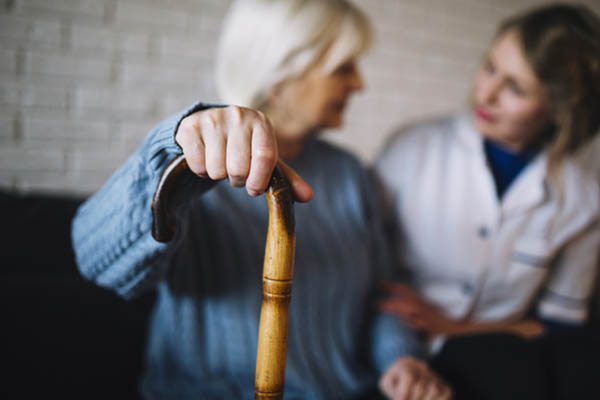
Women’s Spirituality: It’s a hard thing to learn how to be a gracefully-aging woman in American culture because everything tells us we’re done.
We did the dinner for the dead. I had a group of us that we met together for years and went through the seasons of the year. I want to say that this spirituality and the rituals are not in conflict with any tradition. You still go to church and do your own religious thing. This addresses a different level. They’re not a conflict. We would have the dinner for the dead. We had a nice sit-down dinner with a pretty set table and all that. People brought a picture or a symbol of somebody that they had lost that had meaning for them. After the dinner part, we would sit and each person would introduce that person. Each guest would introduce the person that they had brought, whose memory we were celebrating. When we started that part, it got deep, intense and fast. It was like we all went into another space. It was like those people were there. We introduced our guest and what was something about our deceased guest that they have embodied themselves so that person is still living in a way through them. It was powerful.
I loved that because having lost quite a number of people in my life, including one of my sons, I find that in our culture, people feel uncomfortable talking about relatives or family members who have crossed over. You end up only getting to talk to your therapist about it. I love the fact that there could be a ritual, which is the way that it’s done in other cultures. All Hallows’ Eve is the day of the dead and people go to the cemeteries and take flowers. They have other ways of celebrating Halloween.
My friend whose stories are in the book also is from Central America. She lived in Mexico for a long time. She talks about that too. They go to the cemetery. They bring a whole dinner. They sit and talk with the dead. They bring them up-to-date of what’s going on in the family that year. That person continues to be part of the family life. It’s a whole different approach to death.
They are still a part of us anyway.
It’s acknowledging what has happened.
It’s sad to me that it makes people uncomfortable when you bring that up. I know for me especially, if you bring up the loss of a child, it’s almost people feel it’s contagious. In our culture, we don’t have these kinds of rituals to honor and include the dead. That touched me. One of the things you talk about as being associated with women’s spirituality is that it seems to be a quest for political and social justice. How does spirituality fit into politics and social justice?
The idea that sharing the wealth and making sure everyone’s child is fed and that abject poverty is addressed in a culture that has so much, that becomes a political issue. You may not start with it at the political level, but it’s going to take a political change to make that a reality. The change happens internally but with enough people having that internal change, then external changes begin to happen.
[bctt tweet=”It kills a part of your spirit when you’re not able to speak your own truth.” username=”CarolynCRossMD”]Why do you see that as part of spirituality? Women’s spirituality is the practical version that takes into account social ills and so on. You’re saying that women are hardwired in their spiritual selves to want to address these things?
Our compassion and empathy are hardwired. That goes for eons of raising children and being the inner circle in the tribe or in any of the different areas of history that women have been in. We’ve been wired to be more sympathetic, empathetic, connected to people so that when you’re seeing abject poverty or somebody suffering, women tend to feel it too. We have to struggle to not take it on, but our natural impulse is to want to help and to fix. I don’t mean fix in a bad way but to address the problem, help people.
You see that as part of a woman’s godly nature?
From my studies, I would say we are wired that way. We have a little bit more corpus callosum, the connective tissue between right and left brain. We have more availability for our compassionate nature. That’s there for a purpose. It’s frustrating when you have that awareness to live in a culture that isn’t playing that out in a healthy way. We’re confronted with injustices all the time and that can be challenging.
Do you see that across cultures, this connection between politics, social justice and women’s spirituality?
It’s there. The wiring is the same in the different cultures. How it gets played out is probably different. I did focus on Western culture for this examination or this exploration of spirituality.
You talk about Celtic spirituality. You talk about Native-American and African-American. There’s a wide array of cultures that you do discuss in the book.
They do share that. I would say of those cultures, women are very akin to Native-American spirituality.
Why do you say that?
It is tribal and it’s communal. It’s sharing the resources and it also honors nature. It sees God in nature. Those are some of the reasons. It’s more of a feminine culture than ours. We’re all part of the same culture but through the Eurocentric culture.
I want to talk a little bit about how you see the future as it relates to women and global issues.
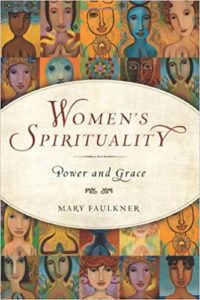
Women’s Spirituality: Power and Grace
I want to hearken back to the title to get into that discussion and that is I chose Women’s Spirituality: Power and Grace. That defines spirituality and women in power. Women have experienced power in a negative way. Therefore, they usually don’t want to think of themselves as powerful. They push that word away and they get uncomfortable when you refer to their personal power. I wanted to bring it out as grace, meaning that we all have an inborn power. That is God’s presence within us, let’s say it that way. Everyone has an equal amount of that. There isn’t any more God in one person than in another person. That sets that up for how that begins to awaken that power to women so that they begin to find their voice and begin to have more influence and decisions in their life. That eventually, to me, plays out in a political way and what we want. If there are enough voices, what we want happens. Women’s voices have been muffled over the years. We need to be able to find that voice and feel strong about what we want to see the world look like.
When you mean grace, are you saying that a woman’s exercise of her power is with grace?
Yes. It is with grace. It also is given to us by God, which would be the grace part. It is a gift. It isn’t something you acquire. We know that isn’t true but ideally, power is separate from your accomplishments. It is organic to who we are.
It’s a part of our nature to have that power. That’s important for women all over because I know you see many women who have lost their voice or afraid of speaking their own truth. How it kills a part of your spirit when you’re not able to speak your own truth. In your book, you have stories of women who have been influential in history, women who illustrate certain aspects of spirituality and so on. Can you tell me a couple of women that you’ve personally been inspired by?
One of my mentors is a woman here in Nashville, Jenny Adams. She lives in Franklin. I call her the grand dame of counseling. She’s in her 80s and she’s still working. She’s mentored me a lot. I learned how to be a gracefully aging woman by going out to lunch with her. She’s open and loving to everyone, grounded and simple in her approach to people. It’s interesting for me to watch.
That’s a hard thing to learn, how to be a gracefully aging woman in American culture. Everything in the culture tells us we’re done as soon as we get old.
Here she is at the pinnacle of her career and she’s in her 80s. When we walk into a restaurant, everyone comes forward. The entire wait staff comes, the manager comes and everyone comes because she’s that way. She knows all their names. She knows where they’re going to school and all that. It’s an amazing thing to go out with her.
Is there anybody else that you can think of?
When I was putting the book together, I’m going to go back into history to grab some of these other names because they were powerful. They stopped me in my tracks. Sojourner Truth is one of them and her work. She did amazing work for equal rights, helping free the slaves and women’s rights, both things. Most of these women operated in two or three arenas. That’s what I wanted to make sure that people here too is that women are working for justice in areas that they’re not directly involved in. For instance, white women were helping black women in freeing the slaves. Not enough I’m sure but I’m saying that it isn’t just your own kind that you’re interested in. Harriet Tubman is another one. Cady Stanton, who was a contemporary of theirs and those women all met and strategized together. That’s a book I want to write too.
The thing I miss the most as being a woman who’s getting older is the groups I used to belong to when I was younger. Women would get together and discuss issues that were important to them and discuss spirituality and things like that. That seems to be not as easy to do any more for some reason. I’m not quite sure why.
A lot of it is that we’re all busy working and doing a lot of that. You don’t have time for it and that’s too bad. I had a group way back in the ‘70s. We got together and played poker. It was a non-traditional women’s group. That was my rebel that got that going. In that, we began to put together our understanding of the culture in which we lived. We began to identify the sexism, the ageism and the racism of the culture we lived in. It became a tool of empowerment for us. We had some fun playing cards, too.
Even beyond not having groups to belong to, a lot of young women that I work with don’t like other women. They’ve grown up in a culture where women are competitive with each other. That’s sad. Where we both work at The Ranch, a lot of our patients end up discovering that part of themselves that loves to be a friend to other women. That’s important too.
To be a woman and not like women means you don’t like yourself. We’re trying to be a little man in a dress.
I want to thank my guest and friend, Mary Faulkner, and encourage you again to get her book called Women’s Spirituality: Power and Grace. I want to thank our readers to the blog. I wish you good health and vitality.
Important Links:
- Mary Faulkner
- The Complete Idiot’s Guide to Understanding Catholicism
- Women’s Spirituality: Power and Grace
About Mary Faulkner
 Author of Women’s Spirituality: Power and Grace, Easy Does It Dating Guide, Easy Does it Relationship, Easy Does it Meditation Book and Spiritual Flash Cards, Complete Idiot’s Guide to Understanding Catholicism.
Author of Women’s Spirituality: Power and Grace, Easy Does It Dating Guide, Easy Does it Relationship, Easy Does it Meditation Book and Spiritual Flash Cards, Complete Idiot’s Guide to Understanding Catholicism.

